
INSIDE THIS ISSUE
ADVANCED ENERGY GUIDELINES
STANDARD REVISION A MILESTONE FOR PROPANE AC
COUNTRIES LIMITING AC TEMPERATURES WORKING WITH HAZARDOUS SUBSTANCES
ENOUGH PROJECT
FAIR PAY AGREEMENT BILL SUBMISSION
WHANGAREI TRADE NIGHT
JULY 2022 irhace.org.nz
The Industry Journal for the New Zealand Refrigeration, Heating, Ventilation & Air Conditioning Industries






Econex R32 Inverter Rooftop Packaged
Nominal cooling capacity range between 25.5kW and 55.6kW
Up to 79% reduction in refrigerant related Global Warming Potential compared with current R410A models

Unit footprint reduced by up to 20% when compared with current models
Wide ambient operation range with cooling up to +52°C and heating down to -15°C

Up to 77% increase in season energy efficiency (TCSPF) when compared with comparative non-inverter models


EC Plug Fan and EC condenser fans for efficiency and precise fan speed control
Dual Electronic Expansion Valves

JULY 2022 ww w.te mper zo ne .c om



The Hazardous Substances Toolbox has been created to help businesses know how to work safely with hazardous substances. It offers some key health and safety principles and will help you to comply with your responsibilities.


1 ISSUE: JULY 2022 INSIDE THIS ISSUE Advanced Energy Guidelines Standard Revision a Milestone for Propane AC Countries Limiting AC Temperatures Working with Hazardous Substances Enough Project Fair Pay Agreement Bill Submission Whangarei Trade Night 10
MEMBER BENEFITS 17 20 4 5 6 10 11 12 20 Official Journal of the Institute of Refrigeration, Heating and Air Conditioning Engineers of New Zealand Inc (IRHACE), Climate Control Companies Association New Zealand (CCCANZ), and Refrigerant Licence New Zealand (RLNZ) The Industry Journal for the New Zealand Refrigeration, Heating, Ventilation & Air Conditioning Industries
PUBLISHER
IRHACE/CCCANZ/RLNZ
IRHACE: www.irhace.org.nz CCCANZ: www.cccanz.org.nz RLNZ: www.rlnz.org.nz
EDITOR
HVAC&R Centre admin@irhace.org.nz
MEMBERSHIP admin@irhace.org.nz admin@cccanz.org.nz
REFRIGERANT LICENSING & COURSES admin@rlnz.org.nz
ADVERTISING admin@irhace.org.nz
DESIGN
Bellacreative Ltd
HVAC&R CENTRE
PO Box 217184 Botany Junction 2164 Auckland, New Zealand
e: admin@irhace.org.nz e: admin@cccanz.org.nz
e: admin@rlnz.org.nz
No part of this journal may be printed in other publications without prior written permission of the Managing Editor. Disclaimer: Statements expressed in this publication do not necessarily reflect the policies or views of the associations, and members of IRHACE or CCCANZ. The IRHACE Journal publishes both local and international articles. Standards and or practices may differ from current New Zealand standards and or practices used. No responsibility is accepted by the associations and editor for the accuracy of information or for errors or omissions. The IRHACE Journal is distributed to all the IRHACE and CCCANZ financial members.
ISSN 01148257
MARK MEYER
IRHACE President

A busy month for the HVAC&R industry kicking off with the Whangarei Trade Night and AGMs for IRHACE and CCCANZ. I attended the trade night and it was great to see familiar and new faces both on trade tables and attendees. The speakers were John Greaves, BDT and Dave Nicholls, Real Cold and if you didn’t or weren’t able to attend later this month recordings of their presentations are available via the IRHACE Online Library.
Another year’s celebrations for World Refrigeration Day on 26th June 2022 and all the HVAC&R industry is behind this initiative. By the time this Journal goes to print, the BuildNZ Facilities Integrate event at the ASB Showgrounds 29/30 June would have been held.
Coming up in July:
• Live webinar on Refrigerants Past-Present-Future.
• More recordings available via the Online Library.
• First trade night for 2022 in Canterbury.

irhace.org.nz JULY 2022


NOW OFFERING Therma-Fuser™ Systems - Independent Zone VAV Control - Thermal or Electric Power Options - Zero Maintenance SOLD EXCLUSIVELY BY Visit our website to learn more www.holyoake.com
ASHRAE ADVANCED ENERGY GUIDELINES
To promote building energy efficiency, ASHRAE and its partners are making the Advanced Energy Design Guides available for free download (PDF).
The zero energy Guides offer designers and contractors the tools needed for achieving zero energy buildings. The 50% Guides offer designers and contractors the tools needed for achieving a 50% energy savings compared to buildings that meet the minimum requirements of Standard 90.1-2004, and the 30% Guides offer a 30% energy savings compared to buildings that meet the minimum energy requirements of Standard 90.1-1999.
ASHRAE, in collaboration with AIA (American Institute of Architects), IES (Illuminating Engineering Society), USGBC (U.S. Green Building Council) and the DOE (Department of Energy) continues to develop the Advanced Energy Design Guide (AEDG) Series.

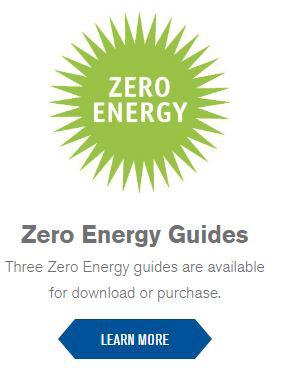


irhace.org.nz JULY 2022
FREE DOWNLOAD OR PURCHASE FROM BOOKSTORE
STANDARD REVISION A “MILESTONE” FOR PROPANE AC
SWITZERLAND: A new standards revision will in future allow a larger charge of flammable A3 refrigerant, like propane (R290), in domestic air conditioners, heat pumps and dehumidifiers.
The landmark revision of the safety standard IEC 60335-2-40, which previously limited charge sizes to, typically, 334g for an A3 refrigerant in a standard-sized split system in a standard size room, was finally approved on Friday (April 29) after six and a half year revision process.
“The new Edition of IEC 60335-2-40 will enable R290 to be used in many AC and heat pump systems, which were previously blocked from using this refrigerant by the outdated version,” commented Asbjørn Vonsild, the convenor of Working Group 21 of SC61D, who shepherded the safety standard through its revisions.
The revised safety standard allows for using a larger charge of flammable refrigerants (up to 988g of R290 in a standard split AC system) in new equipment designed according to certain additional safety requirements to ensure the same high level of safety as equipment using non-flammable refrigerants.
Clare Perry, climate campaign leader for the Environmental Investigation Agency, described the revision as “a critical milestone” on the pathway to net-zero.
“With this new standard, we expect the European Parliament and EU member states to recognise that HFCs are no longer needed for a large portion of the AC and heat pump market and to strengthen the recently proposed EU F-gas regulation accordingly,” she said.
The new standard is expected to be published on the 24 June. Countries will then need to swiftly adopt the revisions into their national legislation.
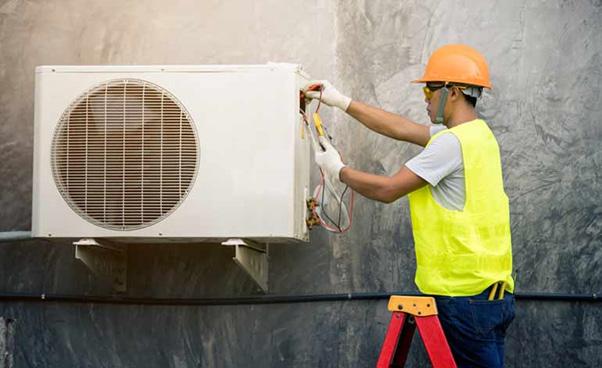
COUNTRIES LIMITING AC TEMPERATURES
Italians could be facing a long hot summer with plans to limit air conditioning in schools and public offices to no lower than 25C.

Called ‘operation thermostat’, the energy rationing scheme is meant to help the country reduce its reliance on Russian gas. Though it is not yet law, the government’s environment and business committee has approved this amendment to Italy’s Energy Decree.
Spain limits air conditioning to 27ºC
Faced with rising fuel prices and EU efforts to reduce energy consumption, Spain has passed a decree that will limit air conditioning in public buildings below 27ºC.
In line with the EU’s REPowerEU plan to rapidly reduce dependence on Russian fossil fuels and fast forward the green transition, Spain is taking measures to limit energy use in public buildings. The measures include ensuring air conditioning is only switched on when required and maximising the use of free-cooling through natural or mechanical ventilation.

irhace.org.nz JULY 2022









7 Contact Eurotec today for more information Automatic and precise refrigerant charging according to target superheat, subcooling and weight thanks to intelligent valve. Compatible with digital manifolds Testo 557s, 550s, 550i, 557, 550 as well as the Testo 115i, 549i, and 605i Smart Probes. Wireless Connection and operation with Testo manifolds and Testo Smart App via Bluetooth® 5.0 . 09 579 1990 www.eurotec.co.nz sales@eurotec.co.nz Refrigerant measurement technology NEW The new Testo 560i Digital Refrigerant Scale with Intelligent Valve revolutionizes the charging of refrigeration systems & heat pumps Available now from Eurotec Ltd 09 579 1990 www.eurotec.co.nz sales@eurotec.co.nz CAREL Electronic Expansion Valves (EEVs) are designed to meet any cooling capacity requirements up to 2000 kW in air conditioning and refrigeration applications, and stand
above
for their excellent
at lower flow-rates. Talk to the Eurotec Team about how CAREL Electronic Expansion Valves can maximise the efficiency of your plant and reduce operating costs. Precision and Energy Savings
ENERGY SAVINGS Energy savings are achieved
to the improved
of the refrigeration
RELIABLE OVER TIME CAREL
have been lifetime tested in the most critical operating conditions
out
all
flow control, even
CAREL Electronic Expansion Valves
due
efficiency
cycle
EEVs
MID-TIER MALADIES NEW RESEARCH OFFERS VITAL INSIGHTS
HVAC maintenance in Australia’s mid-tier is the focus for a trio of reports just released through the Better Ways To Work project. The result of extensive surveys and deep-dive interviews with workers and stakeholders, the new publications shine a light on key issues in the sector.
The project was led by researchers at University of Wollongong, on behalf of the Australian Department of Industry, Science, Energy and Resources (DISER), with the aim of detailing how to improve energy efficiency in the mid-tier office sector. Although these older, smaller, and poorer-quality buildings make up most of the office building stock in Australia, they have been difficult to target with regulation or incentives.
“We know that the kinds of policy levers that work with the top end of town don’t work at this end of the market,” says University of Wollongong researcher Dr Chantel Carr.
“Poorly running HVAC systems consume the largest proportion of energy in these buildings, but owners are reluctant to upgrade or replace systems unless they break down completely, so time and cost are really driving decisions that impact on the long-term energy efficiency of buildings.”

irhace.org.nz JULY 2022
Those who know …
A defining feature of the research was its reliance on talking to workers.
“We wanted to use the eyes and ears of those who service these buildings – HVAC contractors and facilities managers – to really understand how we could drive change in this segment of the market,” says Dr Carr.
The first step was a survey in which more than 1,000 respondents provided solid data about what they see in buildings, and the barriers to doing good maintenance, repair and retrofit work. Next, the project team developed three deeper dives, involving more than 60 in-depth interviews and a more targeted follow-up survey, with people right across the industry.
The first “dive” was aimed at understanding the maintenance workflow better, to identify where to target information programs, incentive schemes or regulation for maximum effect.
The second was aimed at understanding how the issues contractors had reported in the mid-tier office sector translated into other types of buildings, including hotels, shopping centres and aged-care facilities.
The third project was aimed at better understanding some of the workforce issues identified in the survey, and exploring how government and industry could better collaborate to support a workforce that will be vital as Australia’s climate continues to change.
Key findings
Each report provided a range of valuable insights.
“The first project found that there is no ‘silver bullet’ to delivering better energy performance in our building stock,” Dr Carr says. “We need to get better information out to building owners so that they can make informed decisions at the point of retrofit, and we need to target incentive schemes more carefully at different types of owners, to encourage system upgrades and better maintenance.
“But these strategies can only take us so far, and contractors certainly supported the idea of lifting regulation in the sector, with widespread support for options like mandating inspections and logbooks.”
The second project found that many of the barriers to better maintenance in the mid-tier extend to other sectors such as shopping centres and hotels, especially in smaller suburban and regional centres.
“The issues that we’re dealing with are widespread,” says Dr Carr, “and the opportunities for retrofitting buildings are enormous. In aged care, regulation around comfort and safety means HVAC performance is more of a concern, though the solutions aren’t always in line with best-practice maintenance regimes, and we see evidence of a lot of ‘patching’ – installing splits, for example.”
The third project, which focused on professional development, emphasised that the HVAC workforce is already on the front line of Australia’s energy transition and that policies are urgently needed to ensure workers have the right skills to undertake what will be a huge retrofitting exercise across the entire building stock.
“This includes attracting people into the industry, retaining and giving them opportunities to develop careers, and building capacity in new technologies, but also soft skills,” says Dr Carr, “things like presenting a convincing business case for retrofitting to building owners.”
Next steps
The UOW team are currently working to produce academic outputs from the work, to place the results from the survey in the context of global experiences of energy transitions. The results will also be presented widely at events this year, including at ARBS 2022 and the Future of HVAC conference.
“We’re keen to continue the conversation with industry and policymakers,” says Dr Carr. “We’ll also be actively working to ensure the important issues raised through Better Ways to Work continue to be considered by the incoming federal government, who have a clear mandate to act on issues of climate change.”
9
CLICK HERE TO READ THE REPORTS
WORKING SAFELY WITH HAZARDOUS SUBSTANCES
The Hazardous Substances Toolbox has been created to help businesses know how to work safely with hazardous substances. It offers some key health and safety principles and will help you to comply with your responsibilities.
Hazardous Substances Reforms
On 1 December 2017 the rules around managing hazardous substances in the workplace transferred from the Hazardous Substances and New Organisms Act (HSNO) to the Health and Safety at Work (Hazardous Substances) Regulations. You can find out more about what’s changed and how it might affect you on the WorkSafe New Zealand website.
What’s inside the Toolbox?
The Toolbox helps you know your responsibilities under the Hazardous Substances Regulations.
The Hazardous Substances Calculator helps you create your inventory and tells you the controls you need to put in place.
The Workbook gives you instructions for filling out your inventory and an inventory form. The form is set up so that you will record all of the information needed to use the Hazardous Substances Calculator.
Your practical guide to working safely with hazardous substances describes what you need to do to be safe around hazardous substances and includes useful tables and checklists.
The 5 Steps to Safety sets out a 5 step process you must follow no matter what hazardous substances you use and store.
The Emergency Management Flipchart
WorkSafe has developed an emergency management flipchart as a template for an emergency response plan. This will help you document your processes for a range of potential emergencies in your workplace. Emergency management flipchart (PDF).
HAZ SUBS CALCULATOR - WHAT IT IS AND HOW IT HELPS YOU

HAZ SUBS CALCULATORCREATING AN INVENTORY

HAZ SUBS CALCULATORHOW CAN YOU GET THE MOST OUT OF IT?

HAZ SUBS CALCULATOREVALUATING YOUR USE

irhace.org.nz JULY 2022
IIFIIR ENOUGH A NEW PROJECT THAT WILL IDENTIFY HOW FOOD INDUSTRY CAN BECOME NET ZERO BY 2050
The ENOUGH project has set objectives to address and reduce the emissions of the food sector.
Food systems are globally responsible for 20 to almost 40 % of total greenhouse gas emissions. Over the whole food chain approximately 60% of food should be refrigerated at some point and it is estimated that approximately 70% of emissions from food are related to perishable foods. The main source of emissions is related to energy use within the food chain, but leakage of high GWP refrigerant is another relevant source.
Thus, the main scope of the project is to support the EU farm to fork sustainable strategy by providing technical, financial, and political tools and solutions to reduce GHG emissions (by 2030) and achieve carbon neutrality (by 2050) in the food industry.
The plan adopted by ENOUGH is first to provide information and identify a strong baseline on the food chain for 1990 and 2020 to predict the emissions of the food sector in 2030 and 2050. These predictions consider key factors such as the evolution of the global population, climate change, the use of renewable energy systems, consumer behaviour and technology development.
Roadmaps will be then defined to describe the full food supply chain from harvest to consumption to establish new practices for each link of the food chain (processing, packaging, storage, transport etc.) and limit the GHG emissions.

11
READ MORE ABOUT THE PROJECT
FAIR PAY AGREEMENTS BILL SUBMISSION


Grant Price, M.IRHACE presented this submission to the select committee at STCF.
The Specialist Trade Contractors Federation (STCF)is an umbrella group of organisations representing the specialist trades that are the backbone of our building and construction industry. Our members include specialists in structural steel, electrical, plumbing, gasfitting, drainlaying, scaffolding, heating and ventilation, roofing, precast concrete, windows, ceilings, and wall linings.
STCF members represent the businesses that complete approximately 80% of all the construction work in Aotearoa New Zealand and are arguably most likely to be affected by unintended consequences of the Fair Pay Agreement Bill
General
STCF supports fair pay and conditions for all workers and does not believe Fair Pay Agreements (FPA) are needed in our industries as workers are well paid and experienced workers earn the median wage or more.
It is unclear how coverage under the FPA Bill will be determined, and there are serious concerns about who would negotiate these agreements for employers. FPAs will add considerable complexity to the industry and government and are unlikely to be as fair as the current system of individual and collective agreements.
The construction industry is under considerable pressure with supply chain shortages and delays, skills shortages and strong inflationary pressure on material and labour inputs. Introduction of FPAs could have significant consequences for employers who are tied to fixed supply contracts with the unintended consequences of layoffs, casualisation of labour and business closures.
irhace.org.nz JULY 2022
Specific comments:
• Construction is a complex industry with a fragmented and specialised supply chain. The FPA Bill is unclear about how coverage would be implemented in the construction industry, with possible FPA by industry (all of construction), or by trade/service (e.g., electrician, plumber, roofer, labourer). Regardless of how coverage is determined, construction industry associations will be pressured to negotiate FPAs on behalf of all employers in their sector.
• Industry associations are not resourced to negotiate FPAs and would also be representing non-affiliated businesses. Members of industry associations would be carrying the cost of negotiations for businesses who are non-affiliated, and costs of negotiations could render smaller industry associations unsustainable.
• Business NZ has stated it will not be the default bargaining party to FPAs, meaning if an industry association, or group of associations does not accept the role of bargaining agent, the FPA will be determined by the Employment Relations Authority.
• Within each trade or industry lies a multitude of roles, levels of experience and skill. An FPA will need to recognise these, as well as regional differences to avoid the same wage scale being applied to, for example, a new apprentice/ trainee and an experienced and competent worker, which would overnight wipe out thousands of jobs for trainees and remove the financial motivation associated with training and upskilling.
• The complexity within the sector is currently well managed through individual and collective employment agreements. Managing this complexity across a broader FPA will add more complexity, cost and compliance, which will add to the overheads and administrative burdens of businesses.
• Construction trades are under immense pressure to meet demand while struggling with supply chain issues and labour shortages. Wages have grown significantly over recent years, often more than charge out rates can keep pace with. Productivity is under pressure from supply chain shortages in both material and labour and material prices are escalating. Specialist trade businesses are predominantly small or medium size and very vulnerable if labour rates were to move significantly across a whole workforce due to a FPA. This applies especially if the business is tied to fixed price, long term contracts, for example Kainga Ora maintenance contracts.
• Market forces have driven up wages significantly over recent years and these market conditions are not expected to change with a strong forward pipeline of work. Current methods of wage bargaining have worked well for employees and employers, providing the flexibility required by the thousands of small businesses in the sector.
• Specialist trades have been free of industrial disputes for many years with wages and conditions steadily improving, despite the boom bust nature of the construction sector. This long period of industrial harmony is testament to the ability of employers and employees to bargain for themselves in the current system of individual and collective employment agreements.
• Applying FPAs to specialist trades will not result in overall higher pay or improved conditions but will discourage specialist trade business from increasing employment and may result in businesses downsizing to cap wage costs. It is very likely that employers will replace waged staff with contractors or use third party labour hire companies to avoid FPAs.
• FPAs will be costly and time consuming to negotiate and manage for government and industry. FPAs for specialist trades will bring significant risks with doubtful growth in wages.
Summary
Workers in specialist trade businesses are well paid with experienced workers generally earning above the median wage. This is testament to the effectiveness of the current system of individual and collective agreements working in our dynamic and complex industry.
Specialist trade associations are not resourced to negotiate FPAs, and Business NZ have stated they will not be the default bargaining agent. This is very likely to lead to FPAs for specialist trades being set by the Employment Relations Authority, which has no understanding of industry drivers or potential consequences of the FPA. STCF does not support the FPA Bill which has serious risk of unintended consequences to workers and employers. Specialist trade businesses have a proven record of negotiating fair pay and conditions for our workers and there is no benefit from introducing the FPA Bill which will increase costs and compliance and reduce productivity.
Contact us at admin@cccanz.org.nz for more information.
13
DAIKIN PARTNERS WITH FUJIFILM TO REDUCE NOISE FROM SOME OF ITS VENTILATION/HUMIDIFCATION UNITS
Daikin is set to introduce a new noise reduction technology in Japan which is said to reduce ventilation noise by 20% or more in its humidification/ventilation air conditioning units.
The Japanese company Daikin will soon use a new technology to reduce noise in some of its ventilation and humidification units.
Daikin has partnered with Fujifilm to equip ventilation and humidification units sold in Japan with an innovative technology that would reduce their noise level by 20%.
This technology will be used on certain models of mini split air conditioners marketed in Japan. Air conditioning needs are increasing and will continue to increase in the coming years. The issue of air quality is also becoming important. Thus, the conditioning equipment must increase its ventilation capacity, which also increases the noise of the devices.
Daikin has therefore teamed up with an image and sound specialist: Fujifilm. The firm has developed a technology to reduce noise using metamaterials. Thanks to their compact structure, they allow broadband soundproofing and allow air to pass through, but not sound.
The tests conducted by Daikin seem promising since their air conditioning units with humidification and ventilation functions allow the ventilation volume to be increased using state-of-the-art technology, while using noise by approximately 20%.
This technology shows promise for miniaturization of parts and should have a wide range of applications for air conditioning equipment. It will equip the Urusara X and Urusara mini individual air conditioning units from this spring. These devices are mainly sold in Japan.
Daikin has been a corporate member of the IIR since 1973.

irhace.org.nz JULY 2022


15



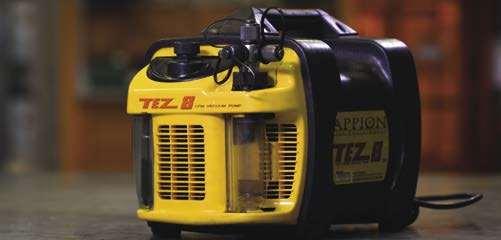



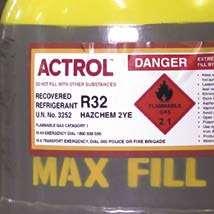
irhace.org.nz JULY 2022


17


MEMBER BENEFITS
CALLING FOR APPLICATIONS
CCCANZ SCHOLARSHIP
AMCA Diploma of Project Management
The scholarship will be awarded in 2023 to up to TWO successful nominees (from different CCCANZ member companies) and has been established to assist an employee of a financial member of the CCCA, to undertake an industry supported study programme.
This programme provides intensive in-depth training in the fundamental of managing for profit in the HVAC&R industry.

irhace.org.nz JULY 2022
APPLICATIONS CLOSE 31st August 2022 APPLY NOW

MEMBER BENEFIT KIT
CCCANZ Board has been working hard behind the scenes to provide you our valued members with value for your membership fees.
We are working with both IRHACE and RLNZ for the betterment of our industry and there are several initiatives that are being released in 2022 that will benefit your company and take away your administration, improve governance and to allow staff involved in the HVAC&R industry an ability to join IRHACE.
RLNZ has changed its strategic direction, and this also benefits our CCCANZ members and is particularly important in ongoing technical education.


19
WHANGAREI TRADE NIGHT
What a fantastic night it was.
Great attendance with 70+ people and we appreciate the support from industry with trade tables.

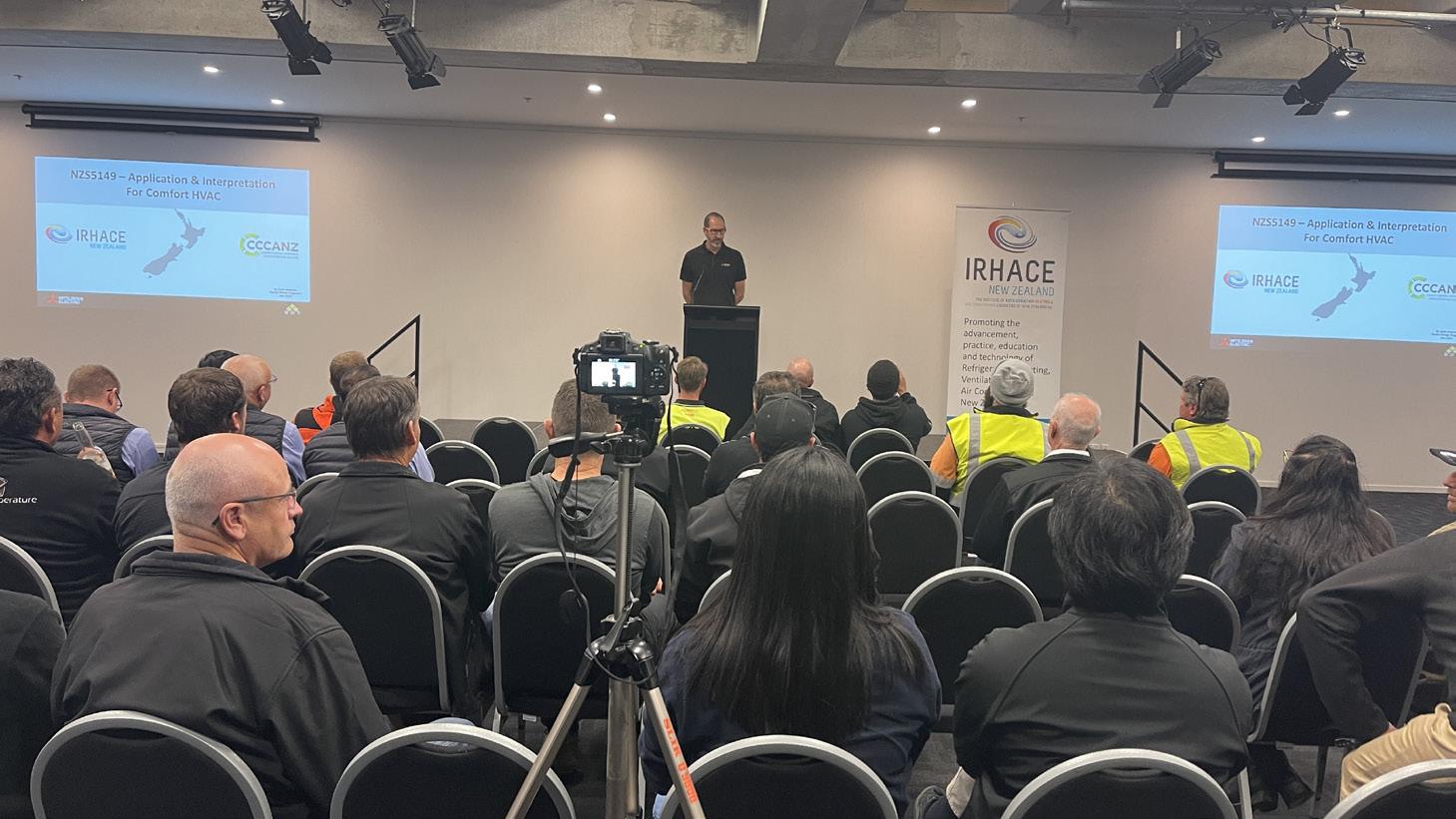

MEMBER BENEFITS
Our presenters John Greaves and Dave Nicholls provided valuable information on the use of flammable refrigerants in an air conditioning application and commercial refrigeration environment. We thank them for their time and efforts in attending our first IRHACE Trade Night for 2022.
Special thanks to the organiser Pip Strickland who volunteers her time in making these events a success.

irhace.org.nz JULY 2022
Pip Strickland, M.IRHACE, IRHACE Auckland Branch
Dio Zhao, Marketing Manager Beijer Ref New Zealand
Also special mention to Dio Zhao who provided the photography for the night and recorded the speakers.
Coming up soon, recordings of Dave Nicholls and John Greaves from the Whangarei Trade Night.

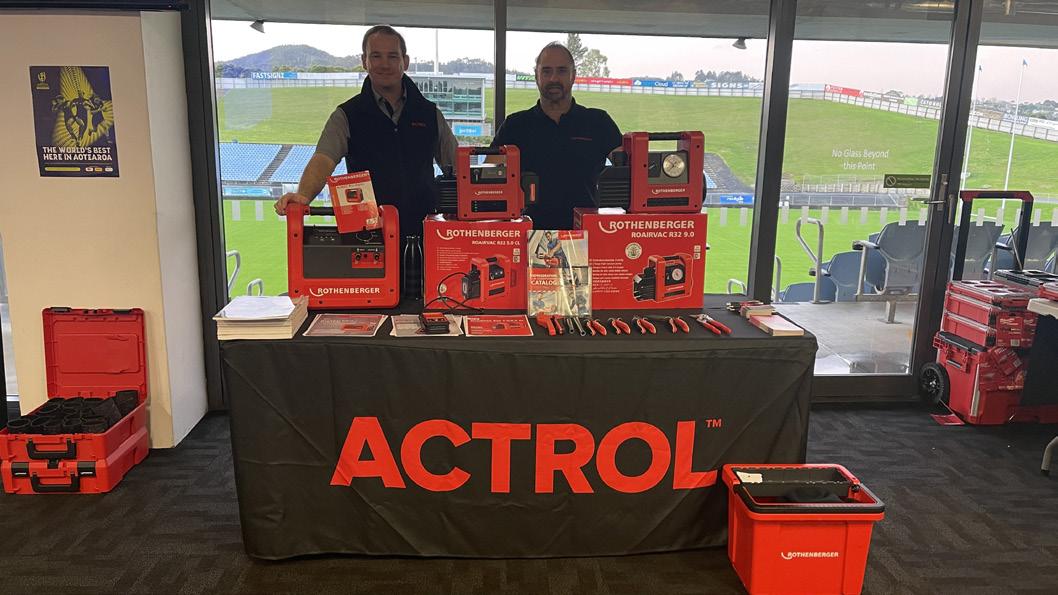


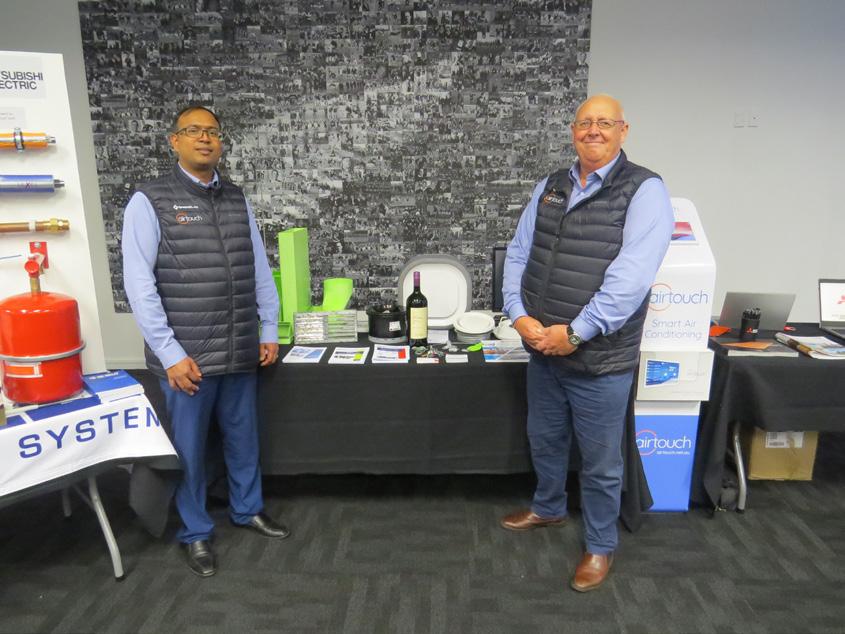

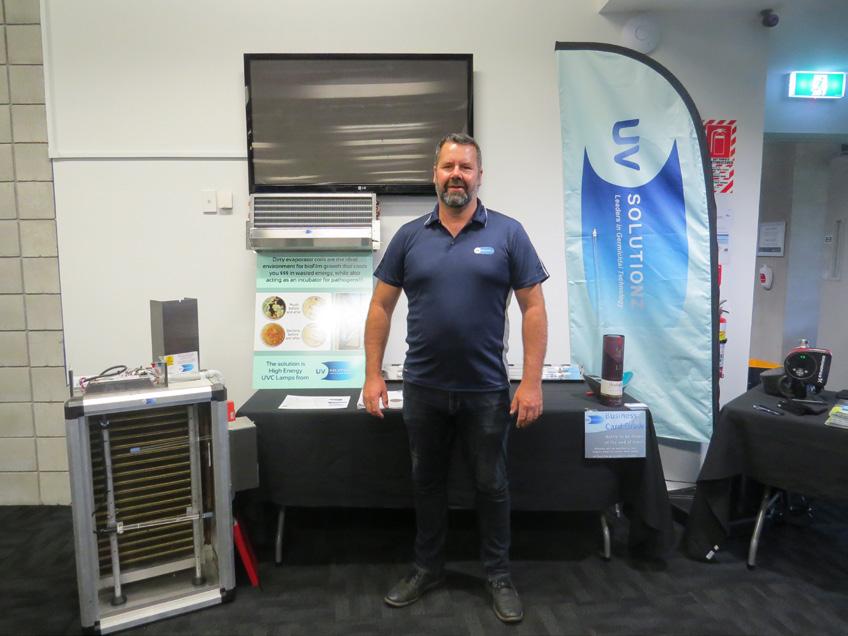
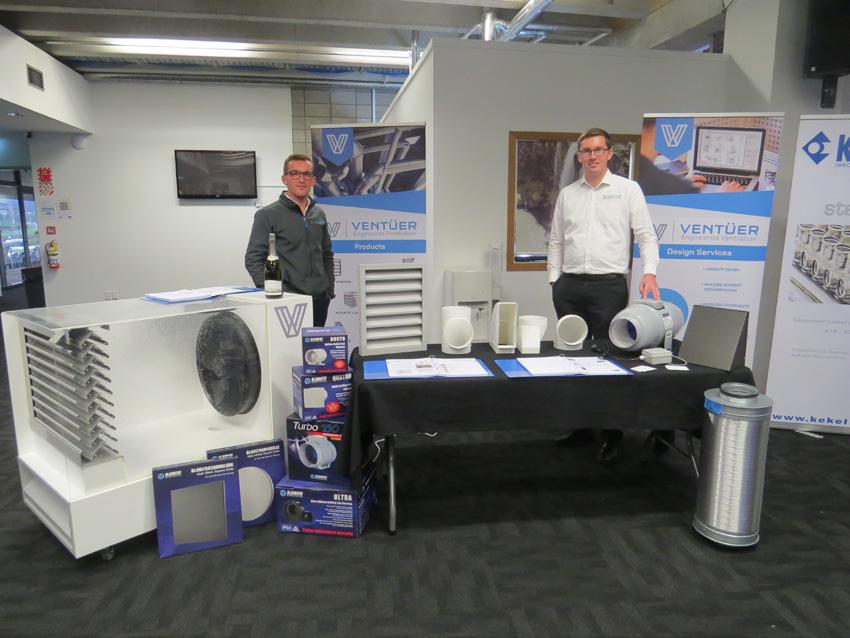

21
2012
10 YEARS
John Paul Bueno
Arthur Curline
2002 20 YEARS
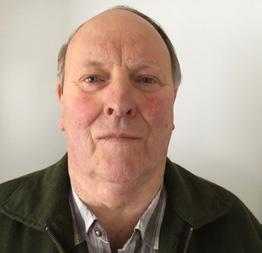
1992

Gregory Bourne


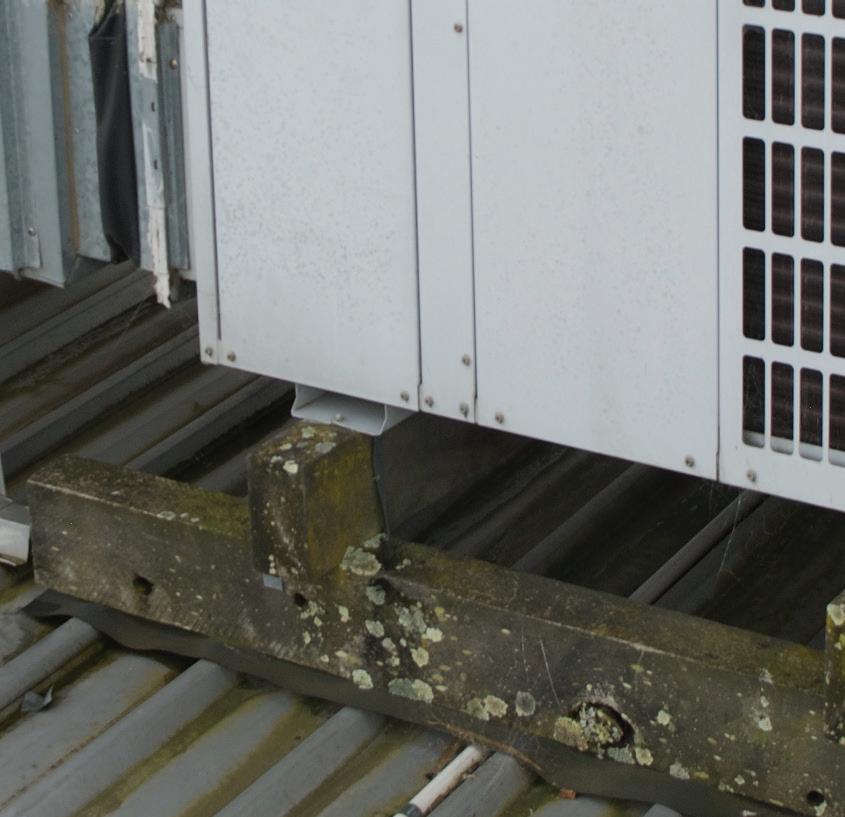
30 YEARS

John Faul
On completing my time with Wilson&Williams Ltd - Refrigeration Division I started a Refrigeration Division with Awarua Eng - Bluff, from there I formed Southern Refrigeration in 1982 with Solander Fisheries, then to Big Glory Seafoods and there to Sandfords (SI) Ltd. In 1995 I took over Southern Refrigeration Ltd and have owned to this day, at age 72 may look at retirement soon?


irhace.org.nz JULY 2022 IRHACE MEMBERSHIP
MILESTONES
Shayne Hales
Geoff Hastings
Geoff Hastings
Feroz Khan
www.S-5.com | +6421 21 100 50 *See website for details. ® Mount HVAC & Other Utilities on Exposed & Concealed-Fix Metal Roofing X Timber rots Plastic splits & breaks Caulking is messy Maintenance is time-consuming X X X ALL Non-Corrosive Metals Uniform Load Distribution Limited Lifetime Warranty*

MEMBER COMPANIES
AMT Maintenance Services Ltd
https://amtmech.co.nz
03-3380145
Christchurch
Aqua
Vent Mechanical Services
https://www.aquavent.co.nz/ 07-3485608
Rotorua
Atmosphere Refrigeration and Air Conditioning Solutions
https://www.facebook.com/atmospherenz
021-487348
Auckland
B W O’Brien & Co Ltd
https://wwwheatpumpswairarapa.co.nz
06-3782288
Masterton
Beattie Air Conditioning Ltd
https://www.beattieair.co.nz
03-3514246
Christchurch
Apex Airconditioning Ltd
https://www.apexair.co.nz
09-2688461
Auckland
Aquaheat
New Zealand Limited – Wellington
https://www.aquaheat.co.nz/ 04-2325179
Wellington
Auckland Heat Pumps Ltd
www.aucklandheatpumps.co.nz
09-5797560
Auckland
BDT
– Black Diamond Technologies
https://www.bdt.co.nz
04 560-9147
Wellington
Carson Electrical Limited
https://www.carsonelectrical.co.nz/ 09-2650695
Auckland
23
A-Z listing of CCCANZ companies, full listing is available from www.cccanz.org.nz
CHRISTCHURCH TRADE NIGHT
Wednesday 13th July
5.30pm - 8.30pm
Food & Refreshments available
DOOR PRIZES TRADE TABLES SPEAKERS
REGISTER NOW

Overview

PRESENTED BY
Included in presentations material from NZ EPA giving insight on what they are thinking with respect to our carbon emission reduction plan, as well as and presenting an overview of global trends / low GWP refrigerants taking us through to Carbon Zero 2050.

Refrigeration
Hosted by IRHACE Canterbury Branch
Followed by: Matthew Hunter, Canterbury Branch Chair speaking on rekindling the IRHACE spirit
irhace.org.nz JULY 2022
JOHN GREAVES BDT
of the Heat pump and air conditioning requirements of Standard NZ 5149
DAVE NICHOLLS
RealCold, F.IRHACE
methodology of Standard NZ 5149
IHRACE MEMBER BENEFIT
Membership is the lifeblood of our existence. The greater the representation of our industry we can gain, the stronger our Institute will be. Each month we showcase the various benefits for a M.IRHACE. Check out our Member Kit for full details

With our MOU with AIRAH our members can gain access to knowledge and information to build your industry skills.
IRHACE members are able to receive AIRAH member pricing on training courses and publications.
Email AIRAH and supply them with your current membership certificate:
Enrol in industry training, training@airah.org.au
Order technical resources, airah@airah.org.au
DESIGN APPLICATION MANUALS

25
DOWNLOAD


MAGNUS inverter, in-line design is the most efficient solution for centralised boiler replacement.
Offering application specific heat-pump water heating systems designed to be integrated as either a centralised or distributed solution for boiler replacement projects. MAGNUS MWH units are highly efficient hot water solutions which maintain a fixed supply water temperature of 40°C to 55°C and are suitable for schools, hospitals and aged care facilities.
� No intermediate buffer tanks
� Most energy efficient system
� Reliable long life systems
� Quiet operating design
� Application specific system design
Products for space heating, underfloor and pool heating, Call 0800 692 472
irhace.org.nz JULY 2022 MAGNUS In-line system efficient operation Conventional intermediate buffer tank system by MAGNUS In-line heat pump supplies heated water at a temperature required by the application Inverter compressor system reduces running costs by lowering power input as the application gets closer to set temperature Lower power input without the inefficiencies of a buffer tank Heated water out to application Cooled water returning Smaller pipes & pumps required Heat pump operates in an on/off fashion with high power input for longer and more often than ideally needed Mixing of heated and cooled water cools the tank so further heating is required - increases power input Higher buffer tank temperature needed than the application requires - increases power input Heated water out Cooler water in Heated water out to application Larger pipes & pumps required Cooled water returning Intermediate Buffer water tank required mixing MWH 900 Heating Capacity Range 7.5kW - 90kW
TEMPERZONE’S MAGNUS IN-LINE HEAT PUMP WATER HEATERS
A new approach to heat-pump water heating is here, MAGNUS MWH by Temperzone. Designed and manufactured in New Zealand these products will satisfy applications for the commercial markets of hydronic space heating.

The design approach for the MAGNUS product line mostly varies from the generic one-size-fits-all approach taken by many other products on the market. The MAGNUS products are designed to be optimally applied to the specific application. This generates a more cost-effective system overall when effectively utilised.
Looking at the application of the MAGNUS systems for space heating the MWH range are designed as inverter-based, in-line systems which are installed without the use of an intermediate buffer tank. These direct heating systems differ greatly to the generic approach taken by other products on the market when the water heater heats an intermediate buffer tank, and the heating demand is supplied from the tank as part of a primary and secondary circuit system design. Whilst the in-line approach requires some modifications to conventional boiler system-based designs, the greatly increased energy savings achieved from these systems makes it well worthwhile. A further benefit has been the ease to which these systems allow for full system integration as “turn-key” systems with integrated controls. Installation is often as easy as connecting the water pipes, setting the required design water temperature, and letting the system take care of the rest. MAGNUS MWH units maintain a fixed supply water temperature of 40°C to 55°C.
The energy saving potential of the MAGNUS range application has been evident from the Dargaville Hospital project, funded by EECA’s Crown loans programme, where a centralised diesel boiler system was replaced with a distributed heat-pump system with integrated controls. Aside from a seasonal heating signal, no further controls work was required for these units.
The space and domestic water heating loads were separately heated by dedicated MAGNUS heat-pumps suited for the individual applications. An independent EECA repor t showed that after one year the hospital was set to save $111,000 on energy costs and $41,600 on maintenance. Other Northland DHBs are following suit and have been or are looking at being similarly converted.
Units already released in the MAGNUS product line are a range of pool water heaters (MWP) incorporating titanium heat-exchangers suitable for both chlorine and salt-based pool systems, a range of underfloor heating systems (MWU) without a buffer tank requirement.
Being released between June 2022 and the end of the year, are a range of R32 refrigerant MAGNUS heating only (MWH) systems, with nominal capacities from 24kW – 182kW, designed specifically for boiler replacement the offer hydronic heating through radiators or fan coils, and underfloor heating arrays. The MWH 900 with a heating capacity from 7.5kW to 90kW will be the first released unit and available from midJune 2022.
For more information, please contact Temperzone Ltd 0800 692 472. www.temperzone.com
27










LIVE EVENTS
www.irhace.org.nz
IRHACE TECHNICAL EDUCATION 2022
Brought to by IRHACE our Webinar series for the HVAC&R industry. IRHACE members* receive access to webinar library as part of their membership.
*exclusions apply.

AIR CONDITIONING REFRIGERANTS
PAST-PRESENT_FUTURE
7TH JULY, 12.30PM
Air conditioning refrigerants Past – Present – Future
Presented by Pete Hutson, F.IRHACE, Technical & Training Manager at BDT
REGISTER

Recorded webinars are available to IRHACE Members as part of their membership. If you have missed a previous Live webinar, go to the library to view.
TOPICS AVAILABLE IN ONLINE LIBRARY
Designing with Ventilation Louvres
Expansion work recovery (EWR)
Air Quality ventilation and Covid 19
IRHACE ONLINE LIBRARY LOGIN
MEMBER PROFILES

PAUL DE BERNARDO RM.IRHACE, member since 1982
Following completion of his apprenticeship and NZCE, and after working overseas for 6 years, Paul joined the family business, Aquaheat Industries Ltd, as managing director where he remained until retirement in 2014.
During his time at Aquaheat Paul experienced and was able to take advantage of the many significant technological advances made in the HVAC and Plumbing industries to both improve productivity and the quality of projects completed by his company.
Outside of Aquaheat Paul also had key roles on the national HVAC apprenticeship committee, the committee responsible for negotiating HVAC industry wages and conditions prior to the implementation of the Employment Contracts Act in 1991 and is a former president of what is now the CCANC. Paul is particularly and justifiably proud of the many apprentices that were trained at Aquaheat, many of whom still work there, either on the tools or in management roles, during his time at the company.

ANDREW CLELAND RF.IRHACE, member since 1987
I finished my PhD on heat transfer during freezing of foods in 1977, leading to a lifetime interest in refrigeration. Then, food refrigeration was nationally important, and New Zealand’s refrigeration research community was regarded internationally as world-class. I was the national leader in the International Institute of Refrigeration through the 1980s and 1990s. In the 1980s the refrigeration research community deliberately moved closer to IRHACE, cooperation that continues to this day. I was privileged to become a Fellow of IRHACE in 1989.
In 2000, I became chief executive of what is now Engineering New Zealand, the professional body for all engineer, then in 2014 became chief executive of Royal Society Te Apārangi, the national peak body for researchers and scholars. From early 2022, I have been making voluntary contributions to the engineering, food and research communities. I look back on a rich career, of which involvement with refrigeration and IRHACE has been a significant part.
Andrew is currently the IRHACE Advocate for the North Island.
DAVID WHITE
M.IRHACE, member since 1966
I originally served my time as an electrician with Westfield Freezing then after a couple of jobs I learnt about refrigeration and then went to Ellis Hardies and did industrial refrigeration. Through G Bridsen joined IRHACE and am still a member at 90 years. I have enjoyed the Institute and look forward to a long membership. David EG White
irhace.org.nz JULY 2022

PROFESSOR GEORGE BAIRD
RF.IRHACE, member since 1977
I had a circuitous route into the HVAC&R industry. A ‘refugee’ from a declining Scottish coal mining industry, having completed a Masters in mine ventilation at Glasgow University, I joined the Heating and Ventilating Section of the London Transport Board in 1962. While there, I got involved in the design of the ventilation of the Victoria Line tunnels and the H&V systems for their railway depots. I attended classes at the National College for Heating, Ventilating, Refrigeration and Fan Engineering, sat and passed the examinations of the UK’s Institution of Heating and Ventilating Engineers (now CIBSE) and became a Graduate Member – my conversion was under way!
I then spent six years with the Building Services Research Unit at Glasgow University researching hospital ventilation and air-borne cross-infection and completing a PhD. After that I became a Lecturer in Building Services at the Aberdeen School of Architecture – six years there prepared me for the Senior Lectureship I took up at the newly established Architecture School at Victoria University in 1975.
I joined the NZ IHVE in 1977, transfering when it developed into IRHACE in the early 1990s. I became involved with some of its committees and was a regular participant and frequent speaker at Annual Conferences as well as promoting the annual Student Award amongst our Building Science students. I was honoured to becoming a Fellow in 2009.
Now an Emeritus Professor and a Retired Member of the Institute (RF.IRHACE) I still look forward to perusing the Journal and participating in local events when I can. I continue to have a mentoring role in building performance research and recognise the critical role of air movement control in our current pandemic.



31 Clima Solutions Ltd. | www.clima.co.nz | 0274 593 363 | rob@clima.co.nz Chillers & Heat Pumps Boilers & Flues Calorifiers Fan Coil Units









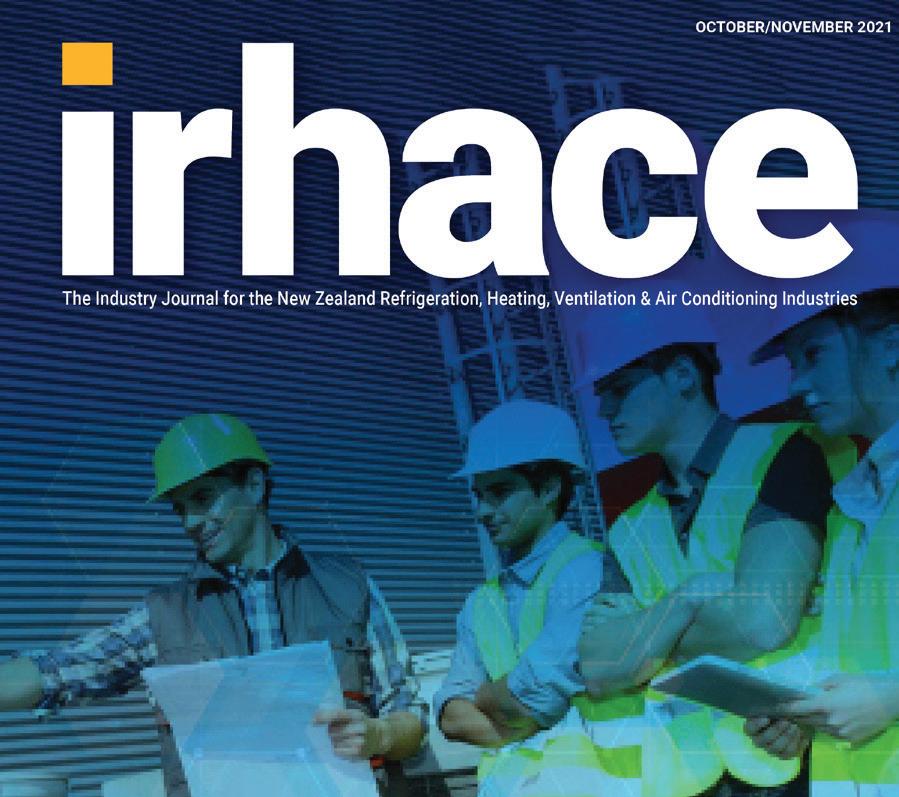












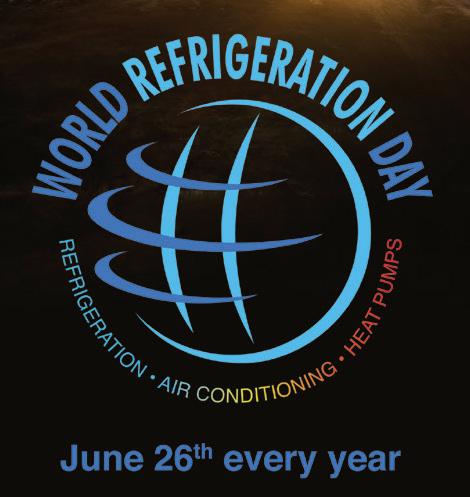









irhace.org.nz JULY 2022







































































































































